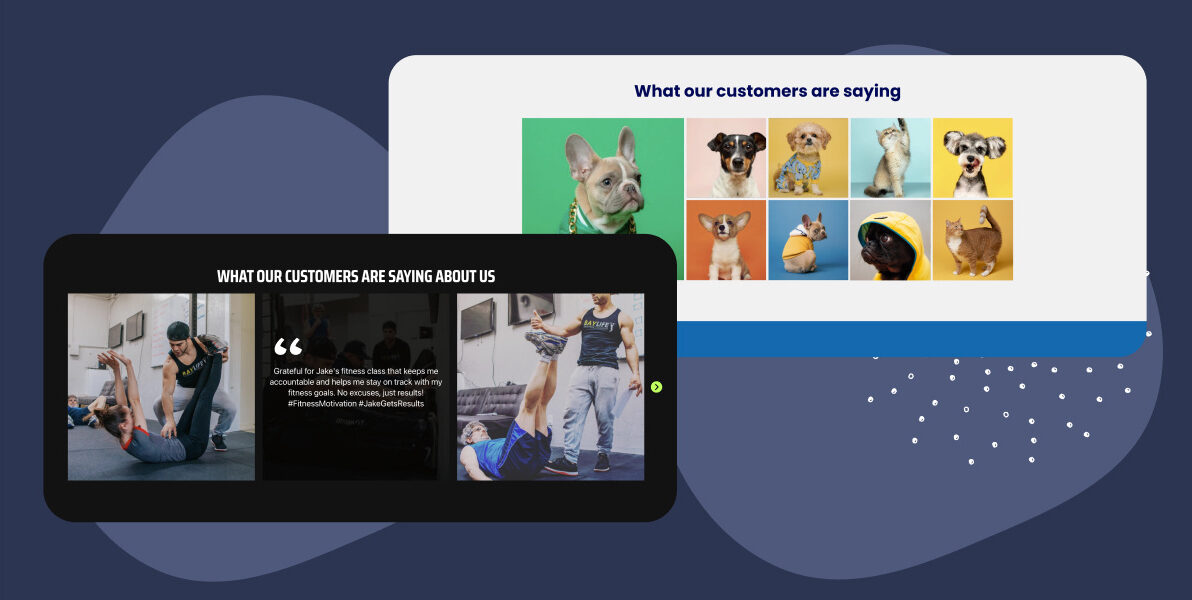Testimonials are golden nuggets of credibility. They build trust with your audience by demonstrating that your products or services have successfully met your customers’ needs. But how do you gather these powerful endorsements effectively and what are the best ways to feature them on your website?
Let’s explore.
The basics: Gathering website testimonials
How to gather testimonials
Gathering testimonials can be quite a challenge. But you’ll be pleased to find out that most customers are often more than happy to share their experiences. Let’s take a quick look at a few methods you can implement in your outreach strategy:
- Reach Out to Customers: Directly asking your customers for feedback after they use your product or service is a straightforward and effective method. Email follow-ups, customer satisfaction surveys, or even a friendly request over a call can yield great results.
- Social Media: Leverage your social media platforms by asking followers to share their experiences. Make it easy and appealing for them to leave their feedback directly on their social feed, or direct them to a link where they can write a more detailed review.
Quick tip: Consider using a social media feed plugin such as Spotlight to fetch reviews directly from Instagram to your website. - Review Sites: Make sure that you’re signed up to popular review sites relevant to your industry. Regularly check these sites and engage with reviewers by thanking them for positive reviews and addressing any concerns raised by less favorable ones.
Quick tip: Use review widgets to effortlessly integrate reviews on your website to save you time. - Hashtag Campaigns: Create a unique hashtag for your brand and encourage customers to use it when posting about their positive experiences. A hashtag campaign can help gather website testimonials as well as increase your social media engagement and reach.
Quick tip: A widget like Spotlight can quickly bring in user-generated Instagram posts using your dedicated hashtag and display them in beautiful layouts on your website. - Offer Incentives: Sometimes, a little nudge in the form of a discount, freebie, or entry into a contest can be just what you need to persuade customers to share their thoughts about your service or product.
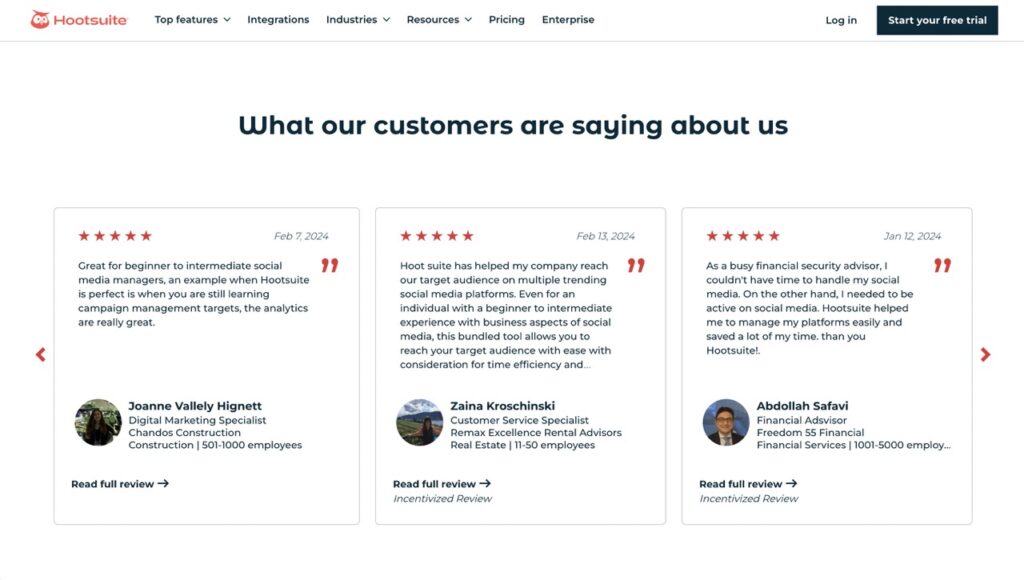
A quick look at the different types of testimonials
Testimonials have evolved beyond the traditional written format. Video content has been on the rise over the past years, with influencers and customers taking social media by storm to share their thoughts on products and services. Let’s take a look at the 6 most common types of testimonials:
- Quotes: Quotes are perhaps the most common type of website testimonials, where customers provide a written statement of their experience.
- Video: Increasingly popular, video testimonials are highly engaging and can convey emotion and authenticity more effectively than text.
- Social Media Posts: Posts, reels, or stories on platforms like Instagram, Facebook, and Twitter can help boost sales. If you’re leveraging Instagram, consider displaying an Instagram feed on your website for maximum engagement.
- Audio: Similar to video content, podcasts or voice recordings are a great way to motivate and influence your audience. One of the main benefits of audio content is that it’s easily shared and consumed by your potential customers.
- Interviews: Interviews provide a deeper dive with a customer discussing their experience on a more personal level. This type of testimonial can take many formats – from video to written blog posts.
- Case Study: Going beyond a simple review, case studies demonstrate how your product or service has solved a problem in a detailed and structured manner.
5 effective ways to feature testimonials on your website
When displaying website testimonials, it’s important to prioritize curation. Pay attention to uniqueness, authenticity and, of course, positivity. It goes without saying that posting negative reviews on your website will hurt your brand.
It’s therefore important to manually curate your testimonials, or rely on a plugin that will make this easier for you. Spotlight, for instance, provides you with powerful filtering and moderation tools to help you focus on the content that will most likely boost conversion.
Now, let’s take a look at the best ways to feature testimonials on your website:
Homepage
Your homepage might very well be your most visited page. Adding your testimonials here will give you immediate exposure – setting the tone for the rest of the user journey. It creates a great first impression that’s bound to convert customers.
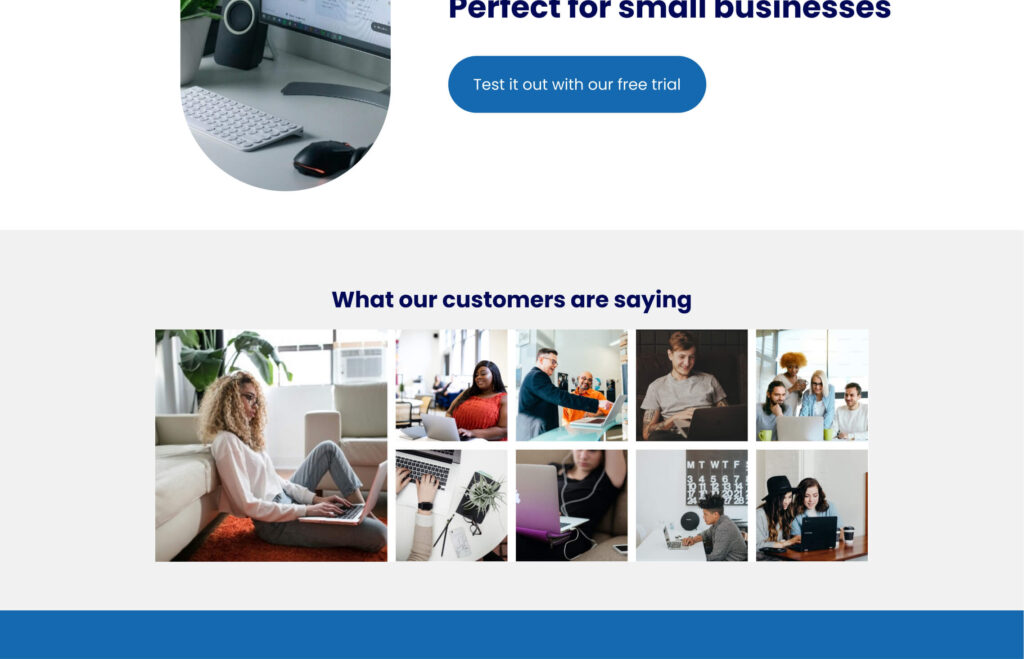
Dedicated testimonials page
For businesses with a wealth of client feedback, dedicating an entire page to website testimonials can be extraordinarily impactful. This not only serves as a reservoir of positive feedback but also improves your site’s credibility and trustworthiness.
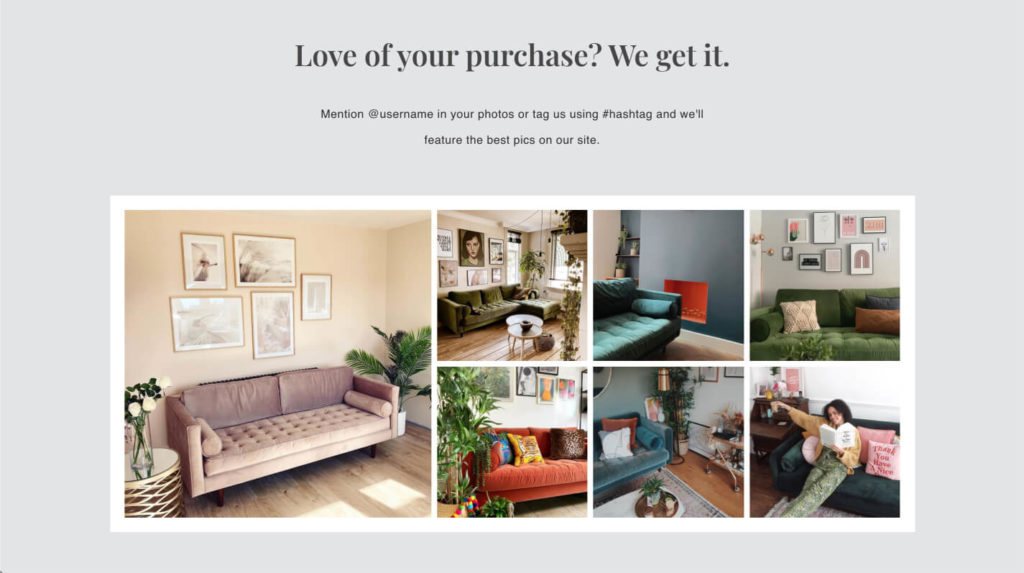
About us page
Your ‘About Us’ page tells your brand’s story and what makes you different. Including testimonials on this page connects the narrative of who you are with positive affirmations from customers, reinforcing your brand’s values through the voices of satisfied clients. It’s a compelling way to validate your claims with actual user experiences and outcomes.
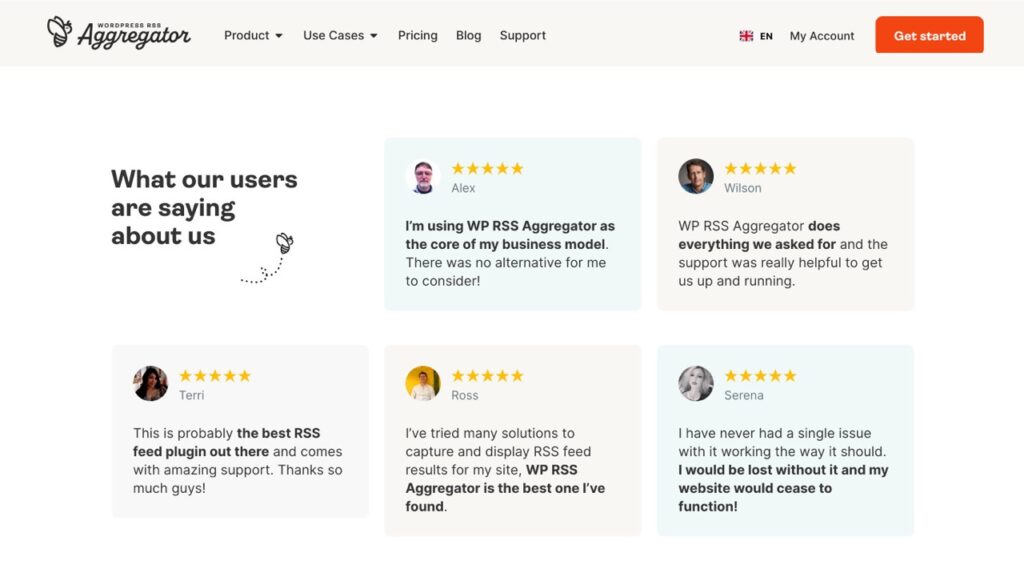
Product pages
Product-specific testimonials directly on product pages can be incredibly persuasive. By placing relevant testimonials alongside your products, you provide potential buyers with direct proof of the product’s value from those who have already made a purchase. This method can reduce doubts and build confidence in your product, potentially increasing the conversion rate.
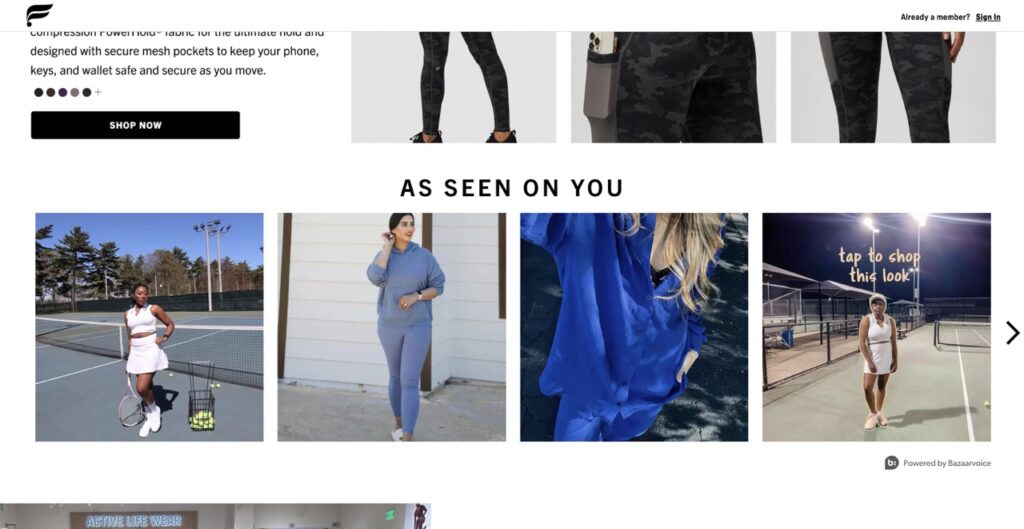
Across the website
To reinforce trust throughout the visitor’s site journey, consider spreading testimonials across various points of interaction. This includes footer areas, sidebars, and even within blog posts. Spreading out testimonials ensures that no matter where your visitors navigate, they are repeatedly reassured by positive feedback from other customers.
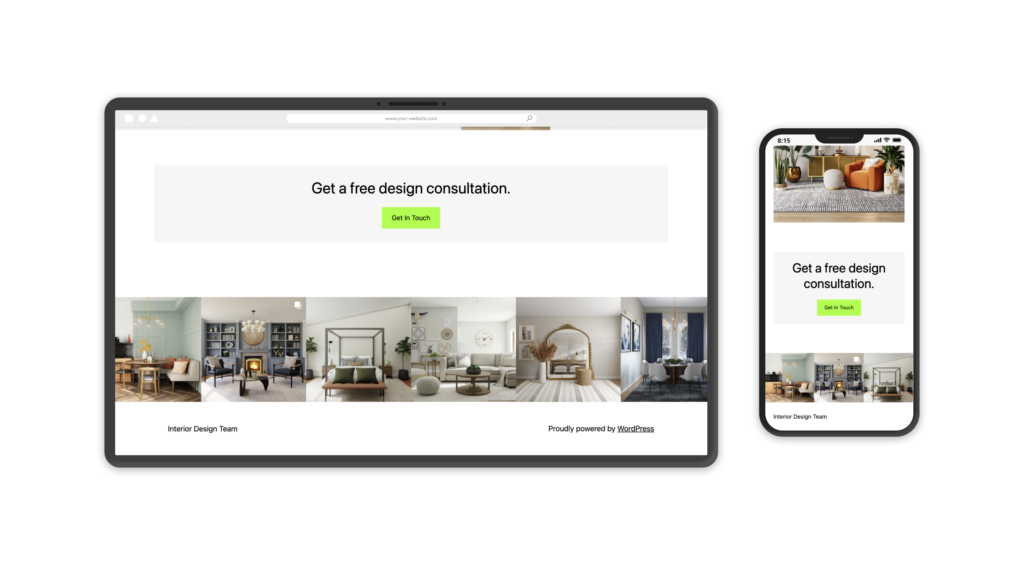
Implementing these strategies to showcase testimonials on your website boosts its aesthetic appeal and significantly elevates its persuasiveness and trustworthiness. By choosing the right tools to bring in testimonials, such as Spotlight, you can easily turn casual browsers into converted customers.

